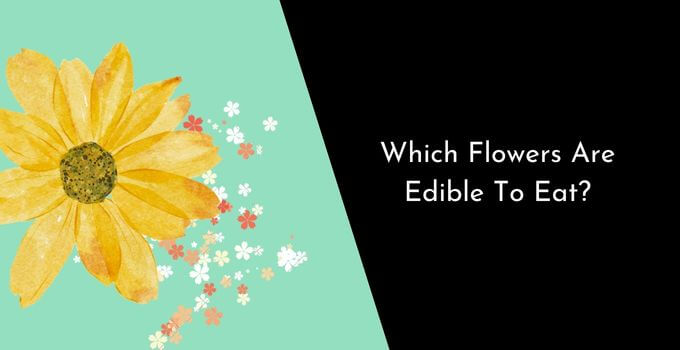Flowers have been a part of our lives for centuries, used to express love and admiration. But did you know that many flowers are edible? I’m here to tell you which flowers are edible and can safely be eaten – so get ready to explore the wonderful world of edible flowers!
In this article, I will explain what edible flowers are, why they’re beneficial and how to prepare them for consumption. If you’ve ever considered adding some colour or flavour to your dishes then this is definitely something worth considering. Not only do they add visual interest but they also offer a range of health benefits.
So if you’re keen on trying something new in the kitchen then let me show you the tasty potential hidden within those petals! With my help, you’ll learn all there is to know about turning everyday blossoms into delicious meals – leaving both you and your family satisfied at every mealtime.
15 Flowers you can eat
Althought these flowers are edible and you can eat to the benefits of each flower, but before eating make sure they are free from pesticides or other harmful chemicals before consuming them.
Roses

As one might expect, the flower of romance is in fact edible! With a little care and effort, you can prepare delicious dishes from roses. From rose-petal salads to rose-water beverages (yum!), there are countless ways to enjoy this fragrant bloom. As an Nutritionist, it’s my duty to inform you that not only do these sweet petals tantalize your taste buds but they also offer some health benefits too.
The most common use for roses is in making rose-syrup or rose-tea. Rose syrup makes an excellent addition to desserts like ice cream, while rose tea works well as a hot beverage if brewed correctly. You can even make jellies out of them too -rose jelly anyone? Not only will you be treating yourself with something yummy but you’ll be helping others at the same time; by using roses instead of other ingredients, you’re reducing waste and providing support for those who grow flowers for their livelihoods.
Lavender

Lavender is a beautiful and fragrant flower that adds a unique flavor to food. It’s also edible! Many people are surprised to learn that lavender can be used in cooking, but it’s becoming more popular in cuisine as chefs discover its distinctive flavor. A few of the ways you can use lavender in recipes include adding it to desserts like cookies or cakes, making lavender syrup for cocktails or mocktails, infusing honey with dried flowers, sprinkling buds over salads and roasted vegetables, creating flavored oils by steeping buds in olive oil, and using fresh sprigs as a garnish on savory dishes.
The key to cooking with lavender is not to overpower your recipe with too much of its strong flavor. Start small and add only a little bit at first – you can always increase the amount later if necessary. To get started experimenting, try some simple recipes such as lavender-infused sugar cubes or lemonade made with freshly pressed juice and infused syrup. You’ll quickly see why this delicate herb has become so popular in modern cuisine!
Violets
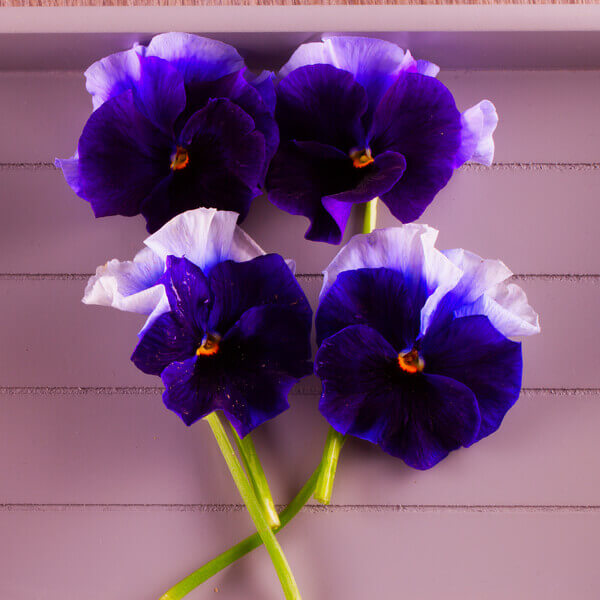
Violets are edible flowers that can be used in a variety of recipes. They have the versatility to enhance dishes both sweet and savory, as well as being an attractive garnish for any plate. Violets also offer many health benefits, such as acting as natural anti-inflammatories and containing nutrients like vitamins A and C. As far as nutrition goes, violets contain high levels of antioxidants which help boost immunity and protect against diseases.
When using violets in cooking or baking, it’s important to first rinse them off with cold water to make sure there aren’t any bugs lingering on them! After that, you can incorporate them into salads, soups, omelettes, quiches, cakes and more. There are lots of delicious recipes online featuring these fragrant little blooms. To top things off they don’t just look pretty on food; their unique taste enhances all sorts of flavors from honey lemonade to salmon tartare!
No matter how you choose to use violets – whether eating fresh or incorporating into your favorite dish – you’ll benefit from the vibrant petals’ amazing flavor and wonderful nutritional content. Whether adding color or flavor to your meals, enjoying the beautiful sight of fresh violet blooms growing in your garden or simply gifting a potted plant to someone special – enjoy every moment you get with these versatile gems!
Chamomile

Chamomile is a versatile flower that can be used in many ways. It has been used for centuries to make tea, and it’s also edible! The chamomile flowers are full of antioxidants, vitamins, and minerals, making them incredibly beneficial when consumed. They have an apple-like flavor that makes them perfect for adding to salads or even baking into recipes like muffins and breads. Chamomile tea has calming effects which help with relaxation after a long day. Not only does this drink provide great health benefits, but its subtle flavors make it a wonderful afternoon beverage.
In addition to the culinary uses of chamomile, many people use it topically as well. Its anti-inflammatory properties make it effective at treating skin irritation and inflammation from conditions like eczema or psoriasis. There are also studies that suggest consuming chamomile may help reduce anxiety levels and improve sleep quality. With all these incredible benefits, why not give chamomile a try? Making your own relaxing chamomile tea or trying out some new recipes could turn out to be quite the delicious adventure!
Nasturtiums
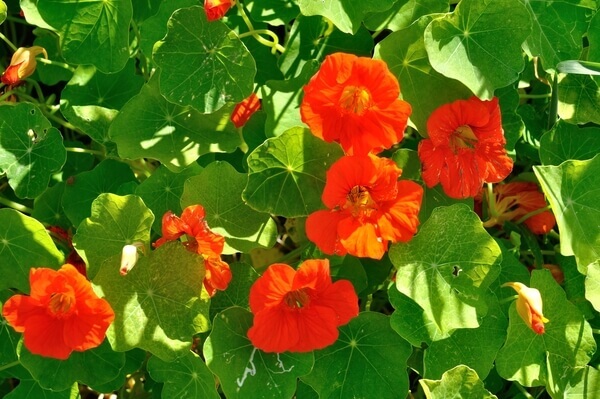
Nasturtiums, like a kaleidoscope of colors in the garden, are one of the most beautiful edible flowers out there. With their bright orange petals and vibrant green leaves, they truly add a splash of beauty to any dish. Not only do nasturtiums look amazing on your plate, but they also come with many health benefits that make them an excellent choice for adding flavor and vibrancy to your meal.
Here’s why you should consider adding nasturtiums to your diet:
- They have anti-inflammatory properties which can help reduce pain and swelling.
- Nasturtiums are rich in vitamins A, C, E, K, as well as minerals such as iron and calcium.
- These edible plants contain high levels of antioxidants which can fight against free radicals and help protect cells from damage.
- Eating nasturtiums regularly may even improve digestion due to its high fiber content.
Using these versatile edibles is easy too; just toss some fresh or dried flower petals into salads, sandwiches or pasta dishes for a pop of color and flavor! You could also try making pesto with nasturtium leaves or pickling the entire plant for added texture and tangy taste. If you’re feeling creative in the kitchen then why not experiment with recipes using both the flowers and leaves? From savory quiches to sweet syrups – whatever you decide to make will be sure to bring life to any meal!
Calendula

Calendula, also known as pot marigolds, are edible flowers that can be used in a variety of ways. It has long been popular for its culinary and medicinal uses, but the petals of this flower have some great nutritional benefits too! The edible calendula petals are high in antioxidants and contain vitamins A, C, and E. They can be added to salads or used as an ingredient in recipes.
The flavor of calendula is slightly bitter with a hint of sweetness. This makes it perfect for adding complexity to dishes like soups and stews. You can also use the edible calendula petals to decorate cakes and other desserts. The petals will keep their color when cooked so they make a beautiful addition to any dish. Additionally, you can dry the flowers and use them in teas or infusions. Calendula tea has many health benefits including anti-inflammatory properties which can help reduce pain and inflammation in the body.
Calendula is easy to grow at home and provides plenty of colorful blooms all summer long! With so many different edible calendula recipes out there, you’ll never run out of ideas on how to incorporate these beautiful flowers into your meals! So get creative with calendula – it’s sure to liven up any dish!
Pansies
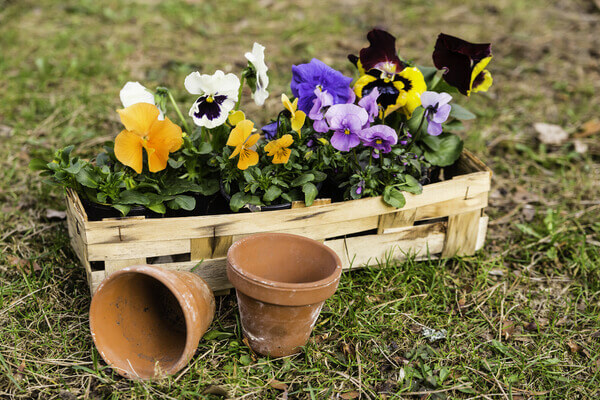
I am filled with awe when I think about the many uses of pansies! Not only are these vibrant flowers beautiful to look at, but they can also be used in cooking. Pansy recipes add flavor and color to dishes without overpowering other ingredients. With their mild yet distinct taste, pansies make an excellent addition to any meal.
Pansies have a sweet-tart flavor that is similar to berry fruits such as strawberry and raspberry. This makes them perfect for adding sweetness to salads or savory dishes like soups and stews. Their petals can also be added to cakes and cookies for extra texture and visual appeal. When using fresh pansy blossoms in recipes, always remember to rinse them thoroughly first – you don’t want mud on your plate!
Cooking with pansies also gives us another way to enjoy their beauty; every dish becomes artfully adorned when sprinkled with colorful petals. Whether you’re making simple sandwiches or complex entrees,pansy food will bring delight both inside and out – visually stunning dishes that tantalize our tastebuds too! So take advantage of this unique flower by trying some delicious pansy dishes today; you won’t regret it!
Hibiscus

I’m excited to tell you about the edible hibiscus flower! Many species of Hibiscus are naturally packed with vitamins, minerals and antioxidants. Not only is it an incredibly beautiful plant, but it’s also incredibly nutritious too. Let me show you its benefits:
| Nutritional Benefits | Health Benefits |
|---|---|
| Rich in Vitamin C | Reduces blood pressure |
| Fiber-filled | Boosts immunity |
| Loaded with iron | Lowers cholesterol |
| Full of calcium | Supports kidney health |
Hibiscus tea has been consumed for centuries as a natural remedy for various ailments such as hypertension, high cholesterol, and digestion problems. The floral flavor of hibiscus can be used to enhance recipes like salads or smoothies, adding not just beauty but also nutrition to your meals. There are many delicious recipes out there that make use of this amazing flower – from ice creams to sorbets – so why not give them a try? You’ll be surprised at how versatile these flowers can be when cooked correctly. Plus, they provide additional nutritional value which makes every meal even healthier.
For those who want to take advantage of the medicinal properties of hibiscus without cooking up something new, drinking hibiscus tea is always an option. It helps boost energy levels while providing ample amounts of vitamin C and other essential nutrients. All you need is some fresh (or dried) hibiscus petals and hot water – no fancy equipment required! So if you’re looking for a healthy way to keep yourself energized throughout the day, then hibiscus tea should definitely be on your list of options.
Marigolds

Momentarily diverting from Hibiscus, let’s look into another edible flower – Marigolds. For those who are kitchen enthusiasts or just have an eagerness to cook with flowers in general, this one is for you!
Marigolds can be used as a garnish on top of salads and soups which will add a slight hint of sweetness. It also makes the dish visually appealing due to its vibrant colour that provides a contrast against other ingredients. The petals of marigolds can be crystallized for cakes and desserts; they even make great additions to homemade jams and jellies. It is always best to use organic marigold petals when cooking them as these contain no chemicals or pesticides.
There’s so much potential when it comes to utilizing marigolds in dishes. You’ll find yourself getting creative while experimenting with different flavours and recipes – why not give it a try? Not only do edible marigolds create aesthetically pleasing dishes but they also provide essential nutrients such as Vitamin A, C and K alongside some minerals like calcium and zinc. So get out there and start cooking with marigolds today!
Dandelions
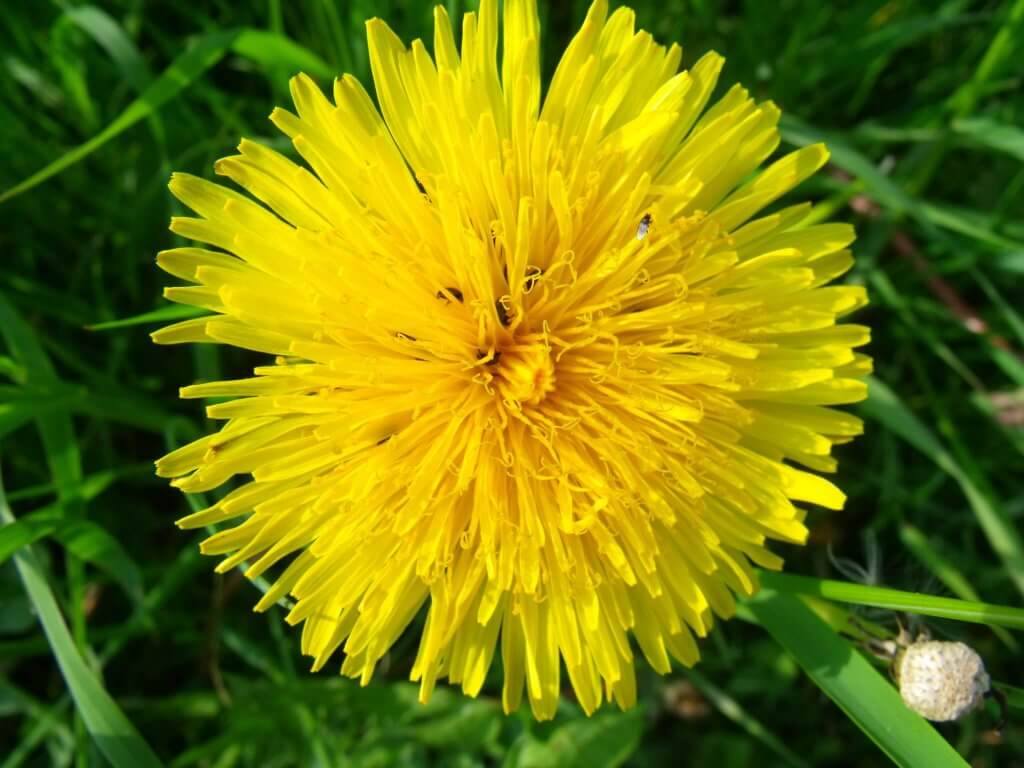
Dandelions are a widely available flower that can be eaten. They have many benefits and uses in the kitchen, making them an ideal option for anyone looking to add some variety to their diet. Dandelion greens can be cooked alongside other vegetables or added into salads. The roots of the dandelion plant can also be roasted and used as a coffee substitute – simply grind it up and brew! For those looking for something sweeter, you can make dandelion tea by steeping fresh petals in hot water – this is sure to help clear your mind!
Beyond recipes, there are numerous health benefits associated with consuming dandelions. Studies suggest they may aid digestion, reduce inflammation, and support liver health. Additionally, they contain high levels of vitamins A and C which can boost immunity and act as powerful antioxidants.
When harvesting dandelions from the wild, always do so responsibly; check regulations regarding picking flowers on public land before doing so. Make sure you don’t pick too many at once since over-harvesting could damage local ecosystems. With these tips in mind, take advantage of all that nature has to offer – cook up delicious meals using dandelions today!
Elderflowers
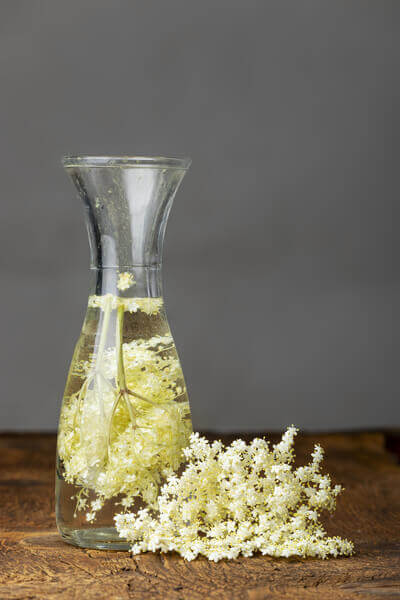
After the bright and cheery petals of dandelions, we now turn our attention to a different type of flower: elderflowers. According to an old wives’ tale, these fragrant white blossoms have been used to ward off evil spirits since ancient times. But instead of scaring away ghosts, let’s explore how one can use this edible flower in recipes!
Elderflower is not only beautiful but also surprisingly delicious when eaten raw or cooked. They add a sweet floral flavor to any dish and make for an attractive garnish on top of cakes, salads, and desserts. For those looking for something a bit more special than traditional recipes with flowers, here are some unique ideas that incorporate elderflower into dishes: try making your own Elderflower cordial syrup as a refreshing summer beverage; infuse honey with Elderflower flavors; bake up some light and fluffy Elderflower cupcakes; or create a savory quiche featuring the lightly tart taste of Elderflowers.
No matter what you choose to do with them, elderflowers provide many opportunities for creative culinary exploration. Whether picked fresh from the garden or found at your local farmers market, these edible flowers can be enjoyed all year round in countless recipes!
Chrysanthemums
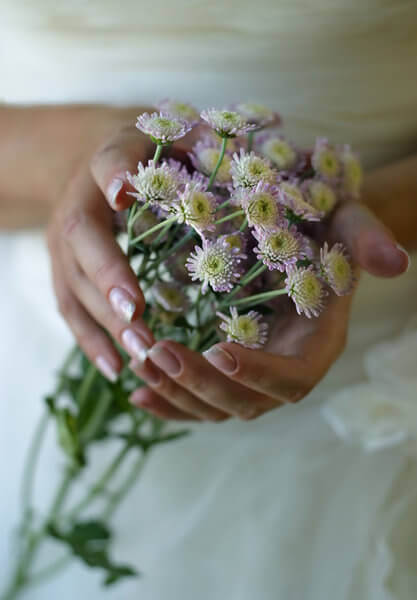
Chrysanthemums are beautiful and versatile flowers that can be found in many colors, shapes and sizes. They also have edible petals! Here’s why you should consider adding these blooms to your diet:
- Chrysanthemum petals make a great addition to salads or as an ingredient for recipes like chrysanthemum tea cake.
- Edible chrysanthemums contain high levels of antioxidants which help fight inflammation, strengthen the immune system and reduce blood pressure levels.
- Chrysanthemum recipes use the flower heads and petals in savory dishes such as stir-fries, soups and stews or sweet desserts like cookies, cakes, ice creams and puddings.
- There are numerous types of chrysanthemums with different flavors from mild to spicy depending on their variety so you can choose one that best suits your taste preferences!
So if you’re looking for a unique way to add flavor and nutrition to your meals – try using edible chrysanthemums instead of regular herbs or spices! Not only will they provide delicious flavor but they offer amazing health benefits too – making them an excellent choice for anyone looking to lead a healthier lifestyle.
Carnations
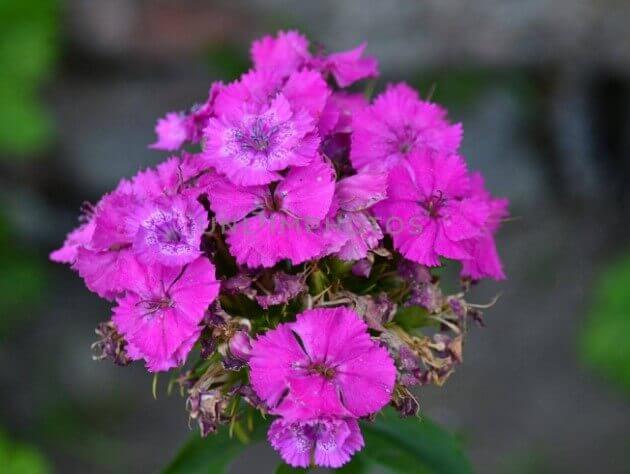
Carnations are truly a sight to behold! They burst forth with an array of colors, from vibrant reds and purples to the more subtle pinks and whites. But did you know that carnations can be edible too? That’s right; these beautiful flowers have been used in cooking for centuries, providing flavor and color to dishes around the world.
From decorative garnishes on salads or desserts to main ingredients in savory recipes, carnations add unique flavors and aromas to any dish they’re included in. In fact, many cultures throughout history have incorporated them into their cuisine, using them as sweeteners or even medicinal remedies. Carnation-recipes abound online – just search for something like ‘carnation-uses’ and you’ll find dozens of ideas for how to incorporate this lovely flower into your cooking repertoire!
The flavor profile of carnations varies depending on the variety and when it was harvested. Some will provide floral notes while others offer citrusy undertones. When cooked, some varieties take on deeper earthy tones while still maintaining their sweetness. Regardless of which type you use, there’s sure to be a carnation-flavor that satisfies everyone’s palate! With so much potential for creativity comes great opportunities for experimenting with different combinations until you find one that works perfectly with whatever meal you’re creating. This is part of the fun of incorporating carnations into your culinary adventures – not only do they look stunning but they also bring fantastic new tastes and fragrances to the table! And don’t forget: each time you cook with carnations, you get a little bit of history in every bite!
Borage
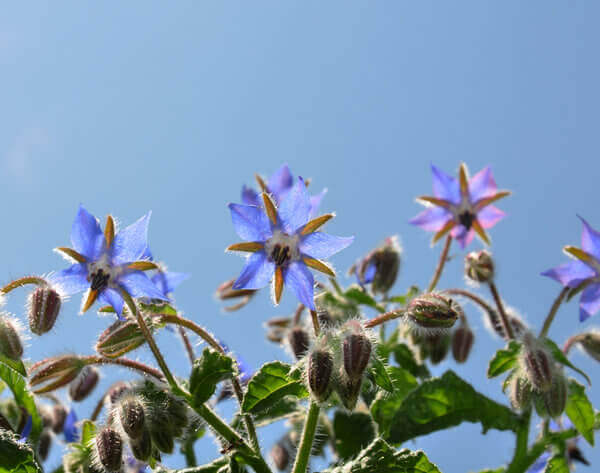
Borage is a beautiful and edible flower that has been used for centuries in culinary dishes. Native to the Mediterranean region, this herbaceous plant now grows across Europe and North America too. Borage’s star-shaped flowers are vibrant blue or pink in color, making them ideal additions to salads and other recipes.
| Nutritional Profile | Uses |
|---|---|
| Rich in omega-3 fatty acids High in vitamin C & A Contains various essential minerals | Culinary uses Garnish/salad topping Herbal tea |
The leaves of borage have an attractive cucumber flavor which makes them great for adding to soups, stews, and sandwiches. The blooms can also be boiled, pickled, or frozen into ice cubes for decorative drinks like lemonade. Borage can even be steeped with honey as a unique herbal syrup! Furthermore, its high concentration of antioxidants make it beneficial when consumed raw or cooked.
When using borage in cooking, try pairing it with tart fruits such as lemons or apples. Or use it fresh as a garnish on grilled meats or fish. It’s no wonder why so many chefs have added borage to their repertoire of edible flowers—it adds both visual appeal and an interesting twist on classic dishes! Plus, there are countless recipes online that incorporate the health benefits of borage into delicious meals. Whether you’re looking for an easy way to add some nutrition to your diet or something special to serve at parties, culinary borage is definitely worth exploring!
Lilacs

I’m excited to share with you some interesting facts about edible lilacs. Did you know that not only are the blooms of a lilac bush considered edible, but so are its leaves and even its stems? That’s right – by harvesting them when they’re still young and tender, all parts of the plant can be safely eaten!
So what can you do with these edible parts? Well, there are plenty of creative ways to incorporate them into recipes. Some popular ideas include adding chopped up blossoms or leaves to salads for extra flavor and texture; using the stems as an ingredient in stir-fry dishes; steeping the petals to make tea; or making syrups from flowers for use as flavoring agents in desserts and drinks. If you’ve been wondering how best to use your lilacs in food, I encourage you to experiment with different combinations until you find something that works for you!
The possibilities don’t end there. Lilacs have also become popularly used as garnishes on cakes, cupcakes, and other baked goods. They look beautiful against a light frosting or ice cream scoop and add a subtle floral sweetness to any dish. Try out this idea at your next dinner party – it’ll be sure to impress your guests!
Conclusion
Many people don’t realize it, but there are actually a surprising number of flowers that are edible to eat. In fact, did you know that over 20 species of flowers have been identified as being safe for human consumption?
It’s interesting to note that some of the most popular and beloved types of flowers can be used in recipes or eaten on their own! Roses, lavender, violets, chamomile, nasturtiums, chrysanthemums, carnations, borage, and lilacs all can make great ingredients for salads or other dishes. Plus they add flavor and beauty to any meal.
But before consuming any flower it is important to ensure it has not been exposed to pesticides or grown near hazardous materials like lead paint or gasoline. It is also recommended to seek advice from an expert horticulturalist prior to eating any unfamiliar type of flower. With proper care and precautionary measures taken in mind anyone who loves flowers will find joy in adding them into their diet!
Affiliate Disclosure: Some of the links in this post are affiliate links, which means I may earn a small commission if you make a purchase through those links. This comes at no extra cost to you. Thank you for your support!

